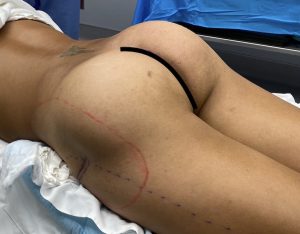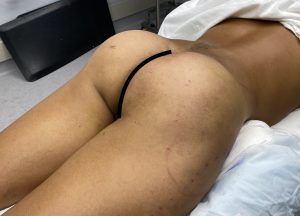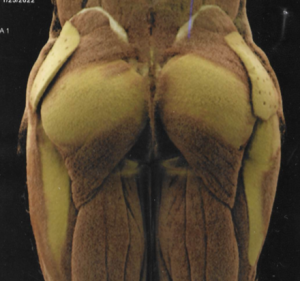Buttock implants have a role to play in buttock augmentation for those patients either are not good candidates for BBL surgery or have less than desired BBK results. Unlike injecting large amounts of fat in BBL, implant placement in the buttock tissues is far more restrictive. When patients request large buttock augmentation results using implants, there are two approaches. Larger buttock implants can be placed in the subfascial location or a staged approach can be taken with implants in the intramuscular space. While the latter approach is not the most efficient it is associated with far fewer risks of complications.
In the staged large buttock augmentation approach, an initial 300cc to 400cc implant is placed in the intramuscular plane. Six months to a year later a nearly double increase in buttock implant volume can usually be obtained. If desired a third implant can even be placed although volume increase will usually only be 50% or less of that of the second implant.
One of the interesting questions in serial buttock implant enlargements is whether they fully remain in the intramuscular space, albeit in stage 2 and particularly in stage 3. (if one goes that far) All soft tissues are capable of being stretched as is well known with soft tissue expansions but this has been most observed in skin and subcutaneous tissues.
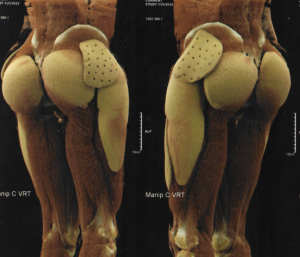
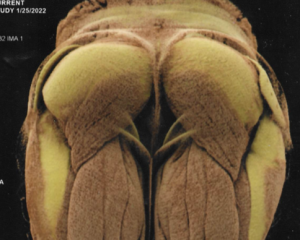
This is not a surprise as the same observation was made through the incisions during the 3rd implant surgery where lack of muscle coverage over the inner aspect of the implants could be seen. Whether this was due to extreme muscle stretch, or more likely, muscle atrophy due to pressure leaves the central portion of the implant in the subfascial location.
While it is most ideal that any size of buttock implant has muscular coverage this is not realistic in very large buttock implants no matter what their initial pocket placement was. The good news is that through serial implants placements the surrounding implant capsule becomes quite thick which adds more tissue cover than the thinner fascia would by itself.
Dr. Barry Eppley
Indianapolis, Indiana




